
Robson90/Shutterstock
From quick meals at roadside rest stops to dinner for the whole family, McDonald's is a fast food joint that always fits the bill. Whether you love to indulge in its delicious breakfast delicacies like the Egg McMuffin (that you can also recreate at home) or prefer the classic burgers, there is something for almost everyone on the restaurant's extensive — and impressively consistent — menu.
There's one item on this menu that is consistently overlooked: the Filet-O-Fish. This fried fish sandwich is the only permanent seafood offering on Mickey D's menu, and it often proves pretty polarizing among the restaurant's most frequent customers. Regardless of how you feel about the sandwich, it has been a mainstay at the Golden Arches since the 1960s, and it doesn't seem like it's going anywhere anytime soon.
But how do the professionals feel about the Filet-O-Fish? We talked to two chefs to get their take on this McDonald's signature. Read on to discover what Monique Mickle, Executive Sous Chef of The Darling Oyster Bar in Charleston, South Carolina, and Amy Casey, personal chef and food blogger at Amy Casey Cooks, really think of McDonald's Filet-O-Fish.
Its consistency is unmatched

Hanna Yohanna/Shutterstock
One of the best parts about McDonald's is its reliability. Whether you prefer its burgers, fries, or shakes, you can expect a meal that is virtually the same every single time — no matter where in the country (or even in the world) you order it. The same is true of the Filet-O-Fish sandwich, which is what makes it such a winner in Amy Casey's eyes. "They always have the same delicious taste," says Casey. "The fish has just enough fish flavor. Mild and not overpowering. It's always cooked well. Not too much so the fish is dry."
And this consistency isn't an accident. McDonald's has strategically created this familiar customer experience in all of its brick-and-mortar locations to add convenience for its customers. They've also created a standardized food prep process to ensure that each Filet-O-Fish gets the exact same treatment. From how the fish is fried to the order of the toppings, McDonald's has detailed operational manuals that help deliver a delicious sandwich time and time again.
The tartar sauce is delicious
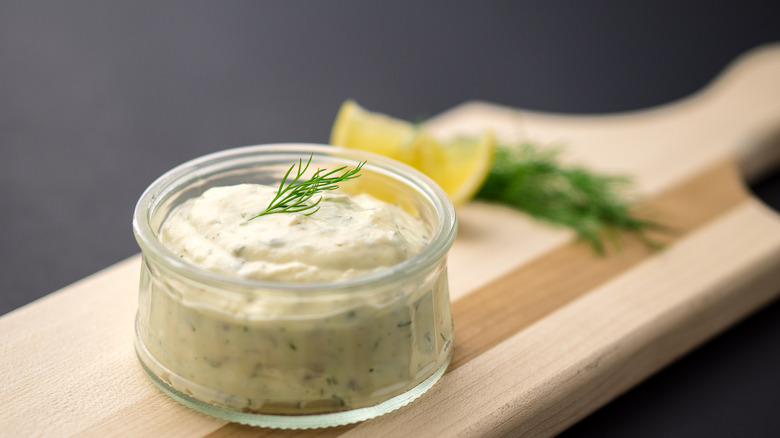
Louno_m/Getty Images
Typically made with a combination of mayonnaise, relish, capers, and herbs, tartar sauce is a staple for many fried fish meals. You'll often find it on the side of traditional dishes like fish and chips, fish sticks, or even crab cakes. The Filet-O-Fish is yet another seafood classic that gets a tasty boost from tartar sauce, which both Amy Casey and Monique Mickle highlight as a key element of the sandwich.
"The tartar sauce is surprisingly flavorful. It's creamy and has a sharp dill flavor," says Casey. Meanwhile, Mickle agrees that it "adds a lot of flavor." Its only downside? "The worst quality is that by the time you get the sandwich, the tartar sauce is warm," Mickle adds.
There are many copycat McDonald's tartar sauce recipes out there, but most use similar ingredients. Where opinions seem to differ is whether to use dill pickle or sweet relish. If you're trying to recreate Mickey D's tartar sauce at home, try it with both to find your preference.
The bun is the perfect base
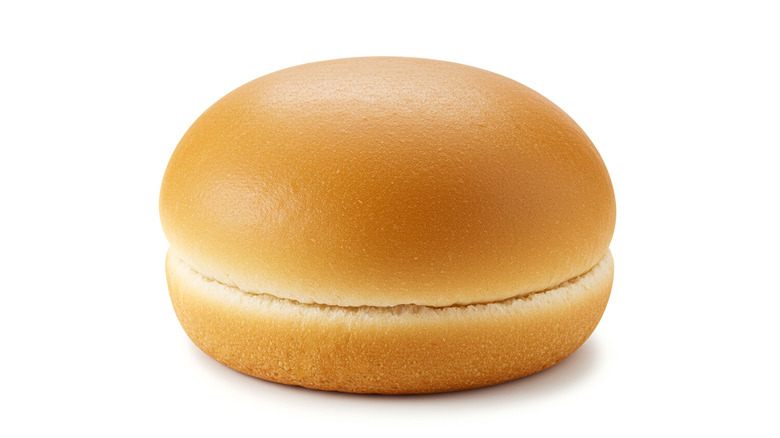
Hseena/Shutterstock
Even professional chefs agree there is one stand-out quality of the Filet-O-Fish: the bun. Monique Mickle admits that while she would "replace the fish with a fresh piece of fish" if she were to recreate the sandwich for herself, she would "leave the tartar sauce, bun, and cheese!" That says a lot about the bun's reputation among foodies.
The soft hamburger bun is the same non-seeded bun used for McDonald's burgers, such as the cheeseburger. However, unlike many restaurants that toast and butter their buns, this fast food giant opts instead to steam them before serving. The bun is steamed for about 11 seconds to help it achieve the perfect pillowy consistency that contrasts with the crunch of the fried fish's exterior. And an insider tip: if you love the steamed texture, you can also request it for other sandwiches.
To recreate a similar vibe at home, use a brioche or potato burger bun. They have a similarly soft, chewy texture, but will impart a bit more flavor than the white enriched buns you'll find at McDonald's.
The bun-to-fish ratio is off
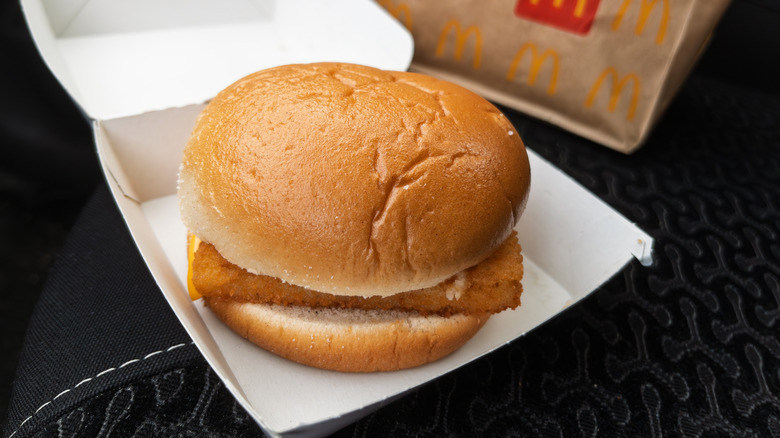
VGV MEDIA/Shutterstock
If you've ever ordered a fish sandwich at a restaurant, it usually comes to the table with a big, crispy, delicious piece of fish between two slices of bread or on a bun. This is where dine-in restaurants have a major leg up over McDonald's fast food version, with Casey attesting to the fact that the patty's size is a flaw. "The piece of fish used for the sandwich could be a little larger," she says.
The perfect size fillet for a fish sandwich will likely depend on who you ask. Some recommend using a 4-to-6-ounce portion for a traditional fish sandwich. The Filet-O-Fish, however, weighs in at only 3 ounces or so (after frying). That's why the fried fish doesn't extend past the edges of the bun. While this might make it easier to eat one-handed (one of the hallmarks of a good fast food sandwich), it does leave the final product a little lacking when it comes to the fish-to-bun ratio.
Pollock is good, but there are other better options
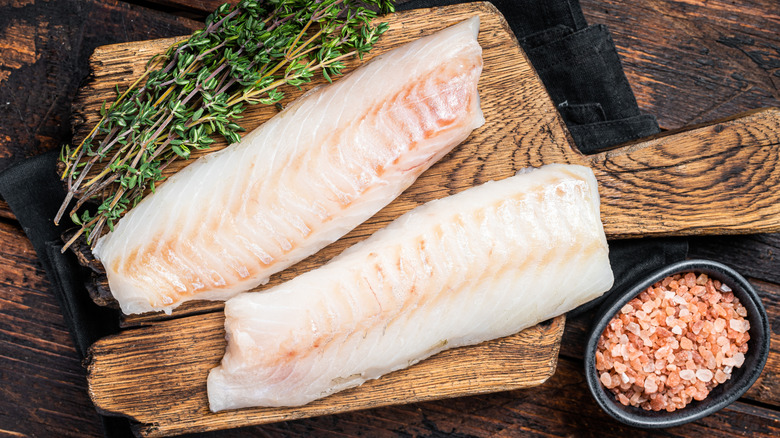
Mironov Vladimir/Shutterstock
The Filet-O-Fish is always made with 100% real fish. The fast food chain uses wild-caught Alaskan pollock, a white fish that is flaky, mild, and doesn't taste quite as fishy as many other seafood varieties. Though it's definitely not a bad option for a fish sandwich, Amy Casey thinks there are some better choices out there. "Cod is a good choice for fish sandwiches, but I would also like sandwiches with mahi mahi, swordfish, or flounder," she explains.
Cod is generally firmer than pollock, holding together well for sandwiches. Though it is typically also more expensive than pollock, it tends to have a lower oil content. It has a mild, sweet flavor and can be easily prepared using nearly any method — including frying for sandwiches or fish and chips. While other fish like swordfish may alter the flavor profile of a classic fish sandwich, thanks to its meatier flavor and denser texture, it allows at-home cooks or restaurant chefs to get creative (though the price of swordfish can add up quickly). Instead of sticking with the "right" fish, remember that there is a sea of other fish varieties to choose from — both literally and figuratively.
The cheese is a must-have

Bhofack2/Getty Images
Though combining cheese and fish is often viewed as a culinary no-no, some rules are meant to be broken. The Filet-O-Fish features a half-piece of melted American cheese, adding a creamy, delicious flavor that complements the tanginess of the tartar sauce and the oiliness of the fish's fried exterior. "The single slice of American cheese is just right," attests Amy Casey. "Any more cheese would be too much."
The sliced American cheese has a mild flavor that doesn't fight the more powerful flavor profile of the tartar sauce. It's also a cheese known for melting well, which is why it's also a popular choice for many sandwiches like grilled cheese or cheeseburgers. Once the Filet-O-Fish bun is steamed, the American cheese is added to the bottom bun. The fish patty is then added on top. This sandwiches the cheese between two warm components, ensuring it gets as gooey and melty as possible before it gets eaten.
It could use more toppings

Nahhana/Shutterstock
The Filet-O-Fish is famously simple. With just four ingredients — bun, tartar sauce, fried fish patty, and cheese — it's a reliable standby that many people love. But for others, it's missing something. Both chefs we spoke with agreed that the Filet-O-Fish is majorly lacking in one area: toppings. "I am partial to lettuce, pickles, and tomatoes, so I may add those as well," says Monique Mickle.
Amy Casey agrees. "I would add shredded lettuce and a thin slice of beefsteak tomato, too," she adds. Toppings like lettuce and pickles add a much-needed crunch to the sandwich that is otherwise relatively soft, thanks to the flaky fish and steamed bun. McDonald's customers can also add strips of bacon (for an extra charge) to get a more salty, umami flavor, or even switch up the sauce. Mustard, ketchup, mayo, or Big Mac sauce are all available instead of — or in addition to — the classic tartar sauce.
The fish's texture is off

Trevor Srednick/Getty Images
While both experts we questioned about the Filet-O-Fish agreed that its flavor profile is spot on, the sandwich isn't totally without its faults. Monique Mickle notes that it could use some improvement in terms of the texture of the fish itself. "I think the texture of the fish is what really separates restaurant-made [or] homemade fish sandwiches from fast food fish sandwiches," Mickle explains. "It's easy to spot the difference when comparing anything to quality, fresh fish. With that said, I also don't expect McDonald's to have fish straight from a fishmonger," she adds.
Fish sandwiches are usually beloved for their thick, fried exterior and satisfying crunch. Though the McDonald's variation does have a thin, breaded shell around the fish, it isn't the airy, beer-batter coating (similar to that of fish and chips) that many expect from a restaurant fish sandwich. While the Filet-O-Fish is delicious in its own right, it doesn't necessarily compare in texture to a sandwich prepared in a sit-down restaurant kitchen with freshly bought and prepared ingredients.
McDonald's fries are the perfect complementary side
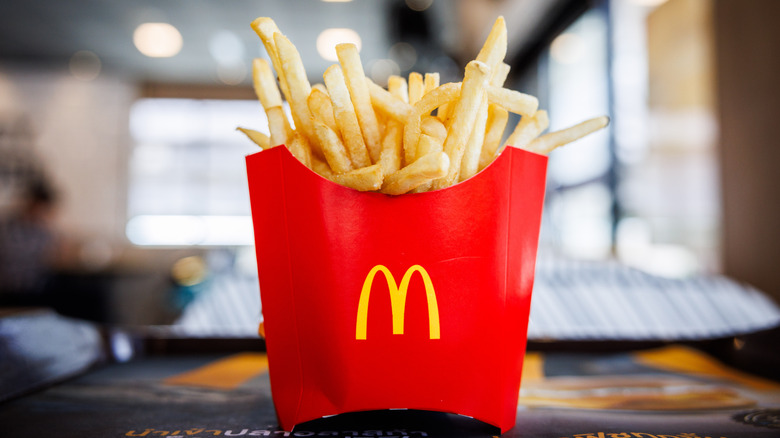
Lauren Decicca/Getty Images
There's no denying that McDonald's French fries are delicious. "McDonald's indeed has some of the best French Fries in the fast food restaurant realm," says Monique Mickle, regarding the best accompaniment to a Filet-O-Fish. And the majority agree. According to CivicScience, 50% of adults who eat fast food prefer McDonald's fries, compared to only 15% for Wendy's and 14% for Chick-fil-A.
One of the reasons why these fries reign supreme is that they're double-fried. The fries are partially fried and then frozen before distribution to McDonald's different locations. They're then fried again before serving, giving them their signature, crispy exterior.
Though they were originally fried in beef tallow, the restaurants no longer use this as their frying fat. They do, however, add beef flavoring to the oil to achieve that same taste — which is one of the real reasons McDonald's fries are so delicious. The crispy fries are the perfect counterpoint to the creamy, mild, and soft-in-texture Filet-O-Fish for a contrasting meal that is arguably just an Americanized take on the classic English fish and chips.
The Filet-O-Fish is perfect in moderation

HelgaQ/Shutterstock
The Filet-O-Fish may come out on top when you're rating fast food fish sandwiches, but that doesn't mean it's the best option in every scenario. "McDonald's is a solid choice in moderation," says Monique Mickle. On the Filet-O-Fish specifically, she adds, "It's decent — not overly fishy — and the tartar sauce adds a lot of flavor. You can tell it's not a fresh piece of fish, but for what it is, it's good!"
Amy Casey agrees. "When you are getting a fish sandwich from McDonald's, the Filet-O-Fish is what you'd expect from a fast food restaurant. It's a good to-grab-and-go sandwich," she says. Even though the Filet-O-Fish is relatively low-calorie compared to some of Mickey D's other options at 380 calories, it still contains a quarter of your daily recommended sodium intake (580 milligrams, to be precise) and nearly a quarter of the recommended saturated fat intake (4 grams). Especially when paired with McDonald's fries, it's not the healthiest choice if consumed on a regular basis.
It's an overlooked McDonald's option

FarisFitrianto/Shutterstock
Though most people have at least heard of the Filet-O-Fish, it's not usually top of the priority list when people hit the drive-thru or head to the order counter. Other iconic menu items like the French fries, the Quarter Pounder, or the McChicken tend to pull in more orders nationwide, with the Filet-O-Fish failing to rank as the most-ordered item in any state. For many, the sandwich falls somewhere in the middle of a McDonald's menu item ranking.
McDonald's didn't even originally have a fish option on its menu. The restaurant quickly became known for its hamburgers after opening in the 1940s, and that reputation lasted through the next several decades. The first version of the Filet-O-Fish wasn't introduced until the 1960s by a franchise owner in Ohio looking to diversify in his heavily Catholic neighborhood (traditionally, the Catholic church prohibits eating meat on Fridays). Today, it remains a go-to for religious observers during Lent as an alternative to church fish fries. Even so, it doesn't receive the same attention as other items, such as McNuggets and the Big Mac.



